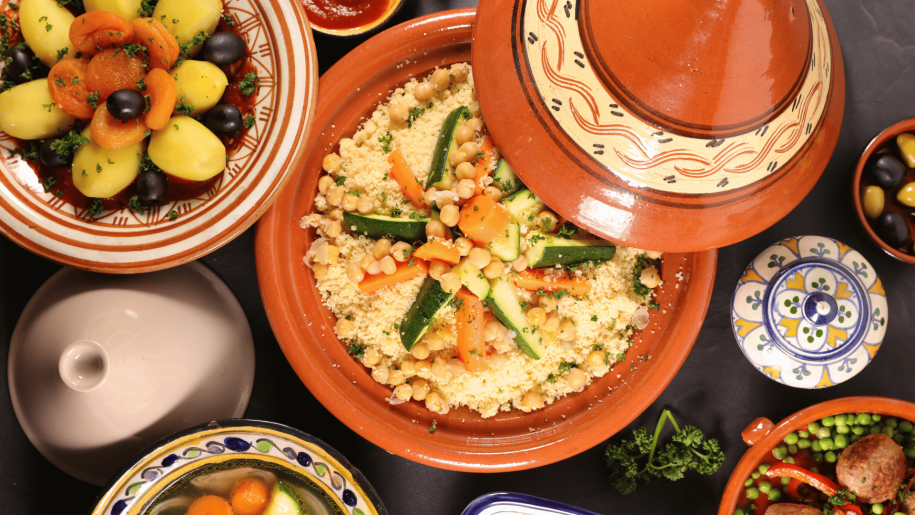Table of Contents
There’s no argument that food is a fantastic gateway to understanding culture, and when it comes to Morocco, the taste adventure is a thrilling voyage of discovery. One of the pillars of this exceptional cuisine is Tajin. In this comprehensive guide, we’ll deeply dive into the world of Tajin, exploring its rich history, varied types, preparation methods, and much more.
I. Unveiling the History of Tajin Morocco
Tajin is more than just a dish. It’s a testament to Morocco’s culinary history, showcasing the influence of various cultures and civilizations over the centuries.
The Origin Story
The name ‘Tajin’ stems from the indigenous Berber language, referring to the dish and the unique earthenware pot it’s cooked in. Believed to have originated around the 9th century, the Tajin cooking method has been passed down through generations, becoming an integral part of Moroccan cuisine.
The Cultural Influence
Tajin Morocco reflects the influences of various cultures – Arab, Berber, Moorish, and Mediterranean – combining ingredients and spices in a harmonious blend. The result is a flavorful stew, an authentic taste of Morocco that narrates the nation’s vibrant history.
II. The Pivotal Role of the Tajin Pot
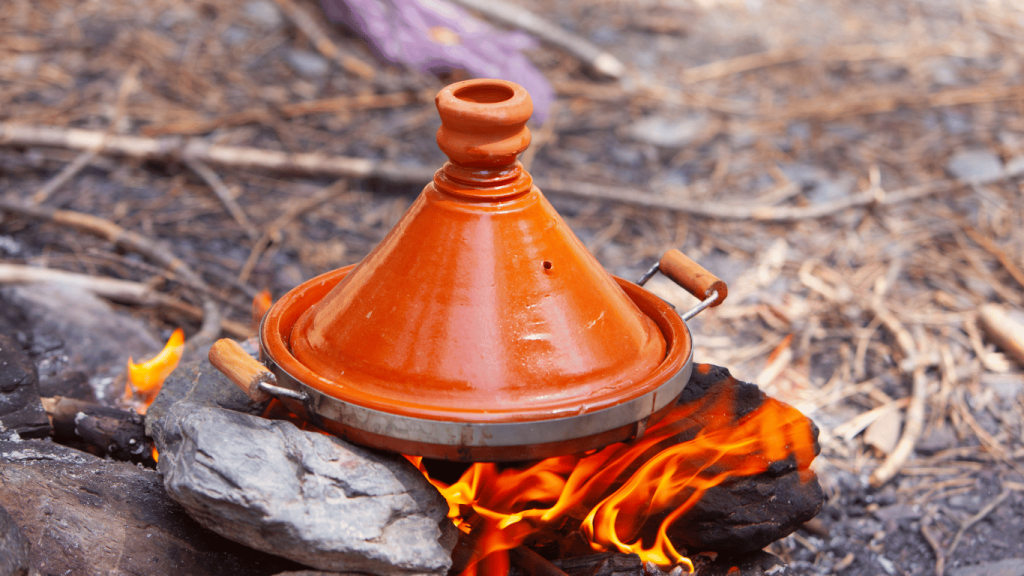
The Tajin dish derives its name from the distinctive conical earthenware it’s prepared in – the Tajin pot. Understanding its role in cooking is crucial to comprehending the true essence of Tajin.
The Design
The Tajin pot has a flat, circular base with a cone-shaped lid. This unique design facilitates a slow-cooking process that melds flavors and tenderizes the ingredients, resulting in a fragrant, juicy stew.
The Material
Made of clay, often glazed, the pot plays a pivotal role in cooking. It retains heat effectively, distributing it evenly and allowing the ingredients to simmer, locking in the rich flavors.
III. Diving into the Diversity of Tajin Dishes
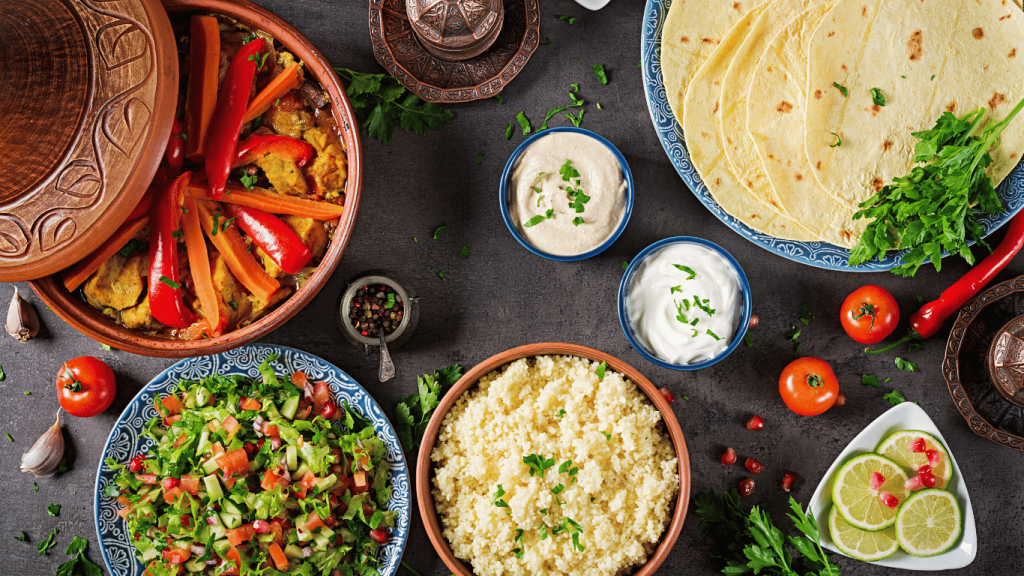
Tajin is a dish of many faces. From meat-based to vegetarian versions, every Tajin stew is a delightful flavor explosion that caters to a diverse range of palates.
The Meaty Indulgence
Whether it’s lamb, chicken, or beef, a meat-based Tajin is a staple in Moroccan cuisine. Typical ingredients include saffron, garlic, ginger, and a range of vegetables, offering a sumptuous taste experience.
The Vegetarian Delight
Vegetarian Tajin Morocco, often featuring seasonal vegetables, olives, and preserved lemons, is a feast for the senses. It’s proof of Morocco’s versatile culinary scene, catering to a broad spectrum of dietary preferences.
IV. Unraveling the Secret of Moroccan Spices in Tajin
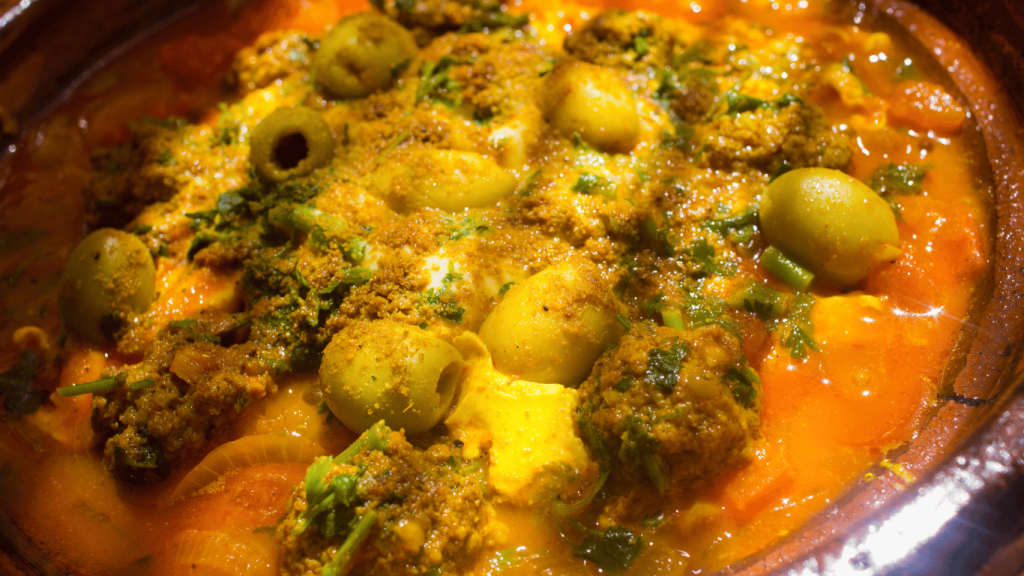
In Moroccan cuisine, spices are the heart and soul, and Tajin is no exception. They bring depth and complexity to the dishes, making every bite a symphony of flavors.
The Essential Spice: Ras El Hanout
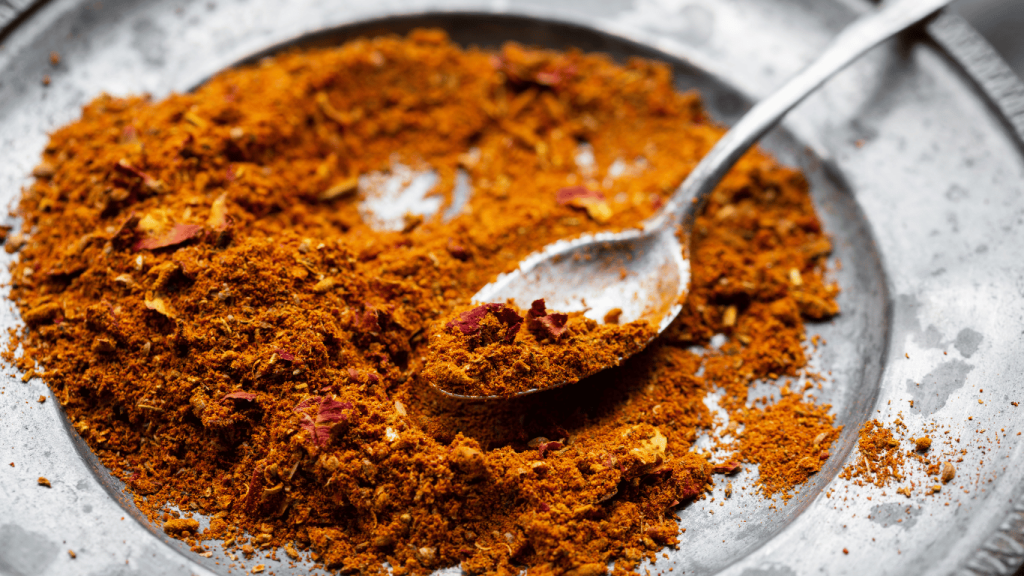
Ras El Hanout, translating to ‘head of the shop,’ is a potent blend of a merchant’s best spices. Comprising up to 35 different spices, including cinnamon, cumin, and cardamom, it is an indispensable part of Tajin.
The Citrusy Charm: Preserved Lemon
Preserved lemon adds a unique, tangy twist to Tajin. By fermenting the lemons in a mixture of salt and their own juices, the result is a flavor-packed ingredient that intensifies the overall taste.
V. Mastering the Art of Cooking Tajin
Cooking Tajin may seem intimidating, but with the right approach, you can master this Moroccan culinary jewel.
The Slow-Cooking Method
Patience is key when preparing Tajin. The slow-cooking process allows the flavors to infuse, resulting in a rich, deeply flavored stew.
The Layering Technique
In a Tajin dish, ingredients are meticulously layered, usually with a base of onions and garlic, followed by meat, vegetables, and vibrant spices. This arrangement ensures an even distribution of heat and flavors.
VI. Pairing Tajin with Moroccan Staples
Serving Tajin with traditional Moroccan sides elevates the dining experience.
The Perfect Pair: Couscous
Fluffy couscous is a common companion to Tajin, perfectly absorbing the richly flavored sauce, making for a delectable meal.
The Irreplaceable Bread
Moroccan bread, or Khobz, is another favorite accompaniment, ideal for scooping up the juicy stew and savoring every last bite.
FAQs About Tajin
1. Is it necessary to use a Tajin pot when cooking Tajin?
While the Tajin pot is traditionally used and adds authenticity, you can still prepare a Tajin stew in a regular pot or slow cooker. However, the unique design of a Tajin pot contributes to the slow, even cooking that characterizes this dish.
2. Can I use any meat for Tajin?
Yes, you can. Typically, lamb, chicken, and beef are used in Tajin recipes, but you can also experiment with different meats according to your preference.
3. Is Tajin a spicy dish?
Tajin Morocco is not typically spicy, but it is flavorful due to the use of various spices. You can always adjust the level of spice according to your taste.
4. Can I make a vegan Tajin?
Absolutely. A vegan Tajin usually consists of various vegetables and the same rich blend of spices. You can also include tofu or tempeh for added protein.
5. What other Moroccan dishes can I serve with Tajin?
Besides couscous and Moroccan bread, you can serve Tajin with Harira (a traditional Moroccan soup) or a refreshing Moroccan salad.
Conclusion
Tajin is a treasure trove of flavors, a symbol of Morocco’s rich culinary heritage, and an exquisite combination of tastes and textures. It embodies the spirit of communal dining and reflects the warmth of Moroccan hospitality. As you embark on your Tajin adventure, remember: it’s more than a dish; it’s a journey through the heart of Morocco. Happy cooking!

